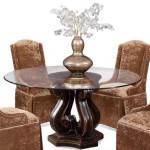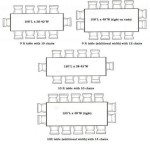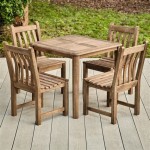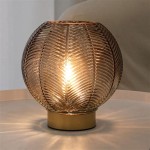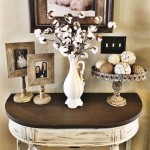Wood Table Base for Glass Top: A Comprehensive Guide
The marriage of wood and glass in furniture design offers a compelling blend of natural warmth and modern sophistication. A wood table base paired with a glass top creates a visually appealing and functional piece suitable for various interior styles. This article delves into the considerations surrounding the selection, benefits, and design possibilities of wood table bases specifically intended for use with glass tops.
Understanding the Appeal of Wood and Glass Combination
The popularity of wood table bases for glass tops stems from the aesthetic contrast between the two materials. Wood, with its inherent grain patterns and textural depth, introduces an element of organic appeal. Its natural warmth softens the clean, often stark, appearance of glass. Glass, on the other hand, contributes a sense of lightness and transparency, allowing the wood base to remain a focal point while minimizing visual clutter. This combination is particularly well-suited for smaller spaces, where the transparency of the glass helps to maintain an open and airy feel.
Functionally, the combination is also advantageous. Glass, being a non-porous material, is easy to clean and maintain. It is resistant to staining and can withstand moderate heat. Wood, depending on the type and finish, offers structural integrity and stability, providing a robust foundation for the glass top. The contrast also allows for greater design flexibility; the wood base can be crafted in a multitude of styles, from rustic and traditional to sleek and contemporary, while the glass top maintains a consistent element of modern elegance.
The design versatility extends to the shape and size of both the base and the top. The wood base can be a single pedestal, a trestle design, a four-legged configuration, or an intricate sculptural form. The glass top can be round, square, rectangular, oval, or custom-shaped to complement the base and suit the specific needs of the space. This adaptability makes wood table bases with glass tops a popular choice for dining tables, coffee tables, side tables, and office desks.
Key Considerations When Selecting a Wood Table Base for a Glass Top
Choosing the right wood table base for a glass top requires careful consideration of several factors, including the wood type, design style, size, and weight capacity. Failing to account for these elements can lead to instability, aesthetic imbalances, or structural failure.
Wood Type and Finish: The type of wood significantly impacts the overall appearance and durability of the table base. Hardwoods like oak, maple, walnut, and cherry are popular choices for their strength and resistance to wear. Softwoods like pine and fir can be more affordable but may require extra care to prevent scratches and dents. The finish applied to the wood also plays a crucial role. A clear finish highlights the natural grain of the wood, while a stained finish can alter the color and add depth. Painted finishes offer a wider range of color options but may require more maintenance to prevent chipping or fading. The finish should also be selected based on the intended use of the table; a dining table base, for instance, should have a durable, water-resistant finish.
Design Style: The design style of the wood table base should complement the overall aesthetic of the room and the style of the glass top. A minimalist interior may benefit from a simple, clean-lined wood base, while a more traditional space might call for a more ornate or detailed design. Consider the shape and form of the base as well. A pedestal base offers a sleek and modern look, while a four-legged base provides greater stability and allows for more intricate designs. Trestle bases are well-suited for larger tables and add a touch of rustic charm. The choice of design style ultimately depends on personal preference and the desired aesthetic.
Size and Weight Capacity: The size of the wood table base must be proportionate to the size of the glass top. A base that is too small will look inadequate and may not provide sufficient support, while a base that is too large will overwhelm the glass. Consider the dimensions of the room and the intended use of the table when determining the appropriate size. The weight capacity of the base is also crucial. Glass is a heavy material, and the base must be strong enough to support the weight of the glass top without sagging or wobbling. Consult the manufacturer's specifications to ensure that the base can handle the weight of the intended glass top. It is always prudent to err on the side of caution and choose a base with a higher weight capacity than required.
Attachment Mechanism: Securing the glass top to the wood base is essential for stability and safety. Several attachment mechanisms are available, including suction cups, adhesive pads, and metal brackets. Suction cups are a simple and inexpensive option, but they may not provide a secure hold, especially for larger or heavier glass tops. Adhesive pads offer a stronger bond, but they can be difficult to remove without damaging the wood or glass. Metal brackets provide the most secure attachment, but they may require drilling into the wood base or glass top. The choice of attachment mechanism depends on the size and weight of the glass top, the type of wood base, and the desired level of permanence. Professional installation is recommended for heavier glass tops or when using metal brackets.
Exploring Design Possibilities and Styles
The versatility of wood table bases for glass tops allows for a wide range of design possibilities and styles, catering to diverse tastes and interior design preferences. From rustic farmhouse to contemporary minimalist, the combination of wood and glass can be adapted to create a unique and personalized piece of furniture.
Rustic Farmhouse: For a rustic farmhouse aesthetic, consider a wood table base made from reclaimed wood with a distressed finish. The wood can be left in its natural state or stained in a warm, earthy tone. A trestle base or a chunky four-legged design adds to the rustic charm. Pair this with a tempered glass top, either clear or with a slight tint, to enhance the natural beauty of the wood. Accessorize with vintage-inspired chairs and rustic decor to complete the look.
Contemporary Minimalist: A contemporary minimalist design calls for a clean-lined wood table base with a simple silhouette. A pedestal base or a sleek four-legged design in a light-colored wood like maple or birch is a good choice. Finish the wood with a matte lacquer to maintain a smooth and understated appearance. The glass top should be clear and frameless to emphasize the minimalist aesthetic. Pair this with modern chairs and minimalist decor in neutral colors to create a cohesive and uncluttered space.
Mid-Century Modern: Mid-century modern design embraces clean lines, organic shapes, and a focus on functionality. A wood table base with tapered legs and a walnut finish is characteristic of this style. The base can feature simple geometric shapes or more sculptural designs. A round or oval glass top complements the organic shapes of the base. Pair this with mid-century modern chairs and decor in vibrant colors and geometric patterns to create a stylish and retro-inspired space.
Industrial Chic: For an industrial chic aesthetic, consider a wood table base made from reclaimed wood combined with metal accents. The wood can be left in its natural state or stained in a dark, weathered tone. Metal legs, brackets, or accents add to the industrial feel. Pair this with a clear glass top to showcase the raw materials and industrial details. Accessorize with metal chairs, exposed brick, and vintage lighting to complete the industrial chic look.
Bohemian Eclectic: A bohemian eclectic design allows for more freedom and creativity. Combine a wood table base with intricate carvings, colorful paint, or mixed materials. The base can be salvaged or repurposed to add a unique touch. A round or oval glass top complements the eclectic nature of the design. Pair this with mismatched chairs, colorful textiles, and eclectic decor to create a vibrant and personalized space.
Beyond these styles, the possibilities are endless. Experiment with different wood types, finishes, shapes, and sizes to create a wood table base for a glass top that perfectly reflects your personal style and complements your existing decor. The key is to consider the overall aesthetic of the room and choose a design that is both visually appealing and functionally sound.
In addition to the above, it is important to consider the overall structural integrity of the table. Ensure the wood is properly treated to prevent warping, cracking, or insect infestation. The glass top should be tempered for safety and durability. Regularly inspect the table for any signs of wear or damage and address any issues promptly to maintain the table's stability and longevity.
Ultimately, the selection of a wood table base for a glass top is a matter of personal preference and practical considerations. By carefully considering the wood type, design style, size, weight capacity, and attachment mechanism, one can create a beautiful and functional piece of furniture that will enhance any space.

Details Dining Table Base For Glass Top

Table Base 324 Kruna 28h For Woodworking Live Edge Top

Dining Table Legs Glass Top Base For Beech Wood Perfect Diy Tables And Furniture Projects Etsy

Saloom Furniture Serpent Dining Table Base Finish Nb Nantucket

Solid Wood Walnut Low Round Coffee Table Base Handmade Furniture Only Glass Top Is Not Included Etsy

Glass Top Table Bases

Briar Rectangle Base Dining Table With Teak Wood And Glass Top Dovetail Bleached

Briar Rectangle Base Dining Table

Luxe Walnut And Maple Slab Base Glass Top Dining Table For Sale At 1stdibs Wood Wooden

Glass Top Teak Root Dining Table



